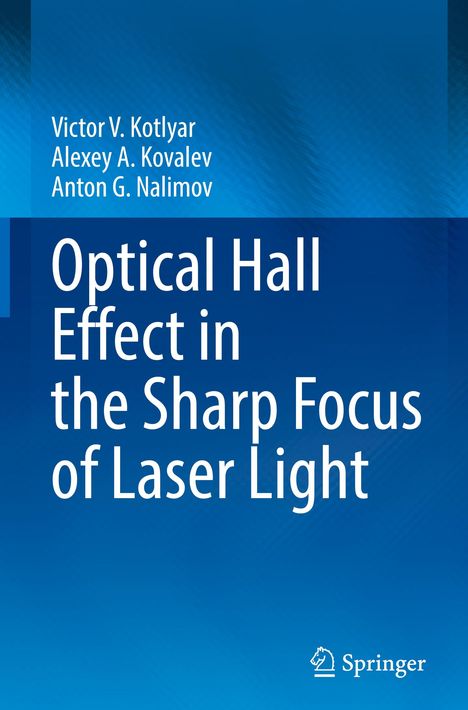Victor V. Kotlyar: Optical Hall Effect in the Sharp Focus of Laser Light, Gebunden
Optical Hall Effect in the Sharp Focus of Laser Light
(soweit verfügbar beim Lieferanten)
- Verlag:
- Springer Nature Switzerland, 09/2024
- Einband:
- Gebunden, HC runder Rücken kaschiert
- Sprache:
- Englisch
- ISBN-13:
- 9783031646829
- Artikelnummer:
- 11970341
- Umfang:
- 296 Seiten
- Nummer der Auflage:
- 2024
- Ausgabe:
- 2024
- Gewicht:
- 665 g
- Maße:
- 241 x 160 mm
- Stärke:
- 21 mm
- Erscheinungstermin:
- 15.9.2024
- Hinweis
-
Achtung: Artikel ist nicht in deutscher Sprache!
Klappentext
This book explores the optical Hall effect in the sharp focus of laser light. It builds upon the established theory of Richards-Wolf (1959), providing numerous real-world examples that illustrate both spin and orbital Hall effects near the focal point.
Within the focal zone, distinct regions of left and right circular polarization emerge, showcasing the orbital Hall effect. This effect becomes apparent when localized areas within the focal plane experience transverse energy flow, rotating either clockwise or counterclockwise. The spin Hall effect, a fundamental occurrence, is demonstrated when a linearly polarized Gaussian beam is concentrated.
Furthermore, the book reveals spin and orbital Hall effects in light fields with nonuniform linear polarization, where the polarization direction varies within the beam cross section. While the optical or photonic Hall effect has been recognized since 2004, a comprehensive monograph detailing its focal dynamics has been lacking until now.
Drawing from the cohesive theoretical framework of the Richards-Wolf theory, this book offers specific examples and results from computer modeling. It equips readers with analytical relations for calculating energy and spin fluxes near a sharp focus across various initial light vector fields.
Designed for a diverse audience, including scientists, engineers, and students in optics and photonics, this book serves as a valuable resource. It caters to undergraduate and graduate students in applied mathematics, physics, informatics, and optics, and can also benefit researchers and professionals in the field. Moreover, the book holds potential as a foundational text for advanced graduate courses



